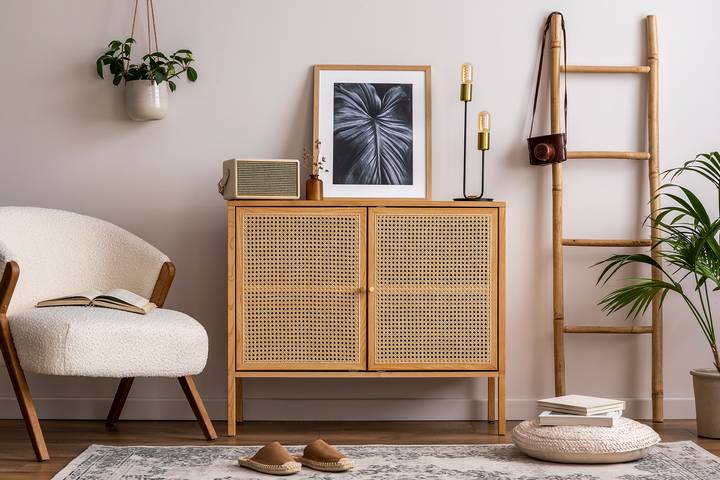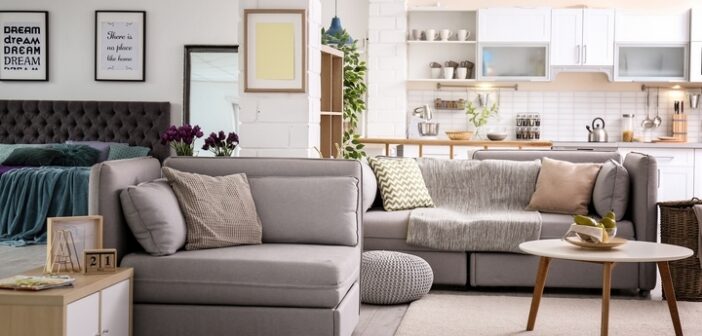The living room is the heart of every house, and its organization, space, and appearance significantly contribute to how the entire house feels. It’s natural to desire a vast living room, but unfortunately, sometimes small ones are available and more affordable.
There are several ways you can maximize living room space and make it the best you’ve ever imagined. All you need is to keep things simple with every space-maximization idea you adopt for your living room and let stylish items take up the space. You can also engage a qualified interior designer or architect to guide you through the journey for more effective results.
Let’s learn how to maximize living room space:
1. Living Room Furniture
 Your choice of furniture plays a vital role in living room space maximization. You should go for the most space-saving pieces, such as sleeper sofas for relaxation beds and seats, expandable tables, pop-up tables, and nesting tables.
Your choice of furniture plays a vital role in living room space maximization. You should go for the most space-saving pieces, such as sleeper sofas for relaxation beds and seats, expandable tables, pop-up tables, and nesting tables.
Experts are also designing furniture with in-built storage spaces, which should be your next move. If your living room is significantly tiny, you should choose a small table rather than a large one. Check out a furniture store to find the best pieces that match the size of your living room space.
2. Create More Storage Spaces
 Storage spaces are everything regarding space maximization in a living room. You can go beyond the standard drawers and cabinets across the room and incorporate other stylish storage options such as fancy storage baskets, hooks behind the door, shelves, and wall racks. When you get a perfect storage solution for everything, you will no longer worry about space in the living room.
Storage spaces are everything regarding space maximization in a living room. You can go beyond the standard drawers and cabinets across the room and incorporate other stylish storage options such as fancy storage baskets, hooks behind the door, shelves, and wall racks. When you get a perfect storage solution for everything, you will no longer worry about space in the living room.
3. Consider Regular De-cluttering
 De-cluttering simply means removing unnecessary items from a room and strictly leaving only what is required. It’s natural to leave some items that belong to the kitchen or bedroom in the living room, which should be discouraged.
De-cluttering simply means removing unnecessary items from a room and strictly leaving only what is required. It’s natural to leave some items that belong to the kitchen or bedroom in the living room, which should be discouraged.
After some time, the living room starts to feel congested and non-accommodative, and that’s when the need for de-cluttering arises. De-cluttering makes a room feel and appear all-new, welcoming, and, most importantly, spacious. You shouldn’t wait until the space has been fully invaded to de-clutter. Occasional de-cluttering is more manageable and effective.
4. Allow More Light into the Room
 Light (both natural and artificial) has been associated with space maximization in all rooms for years. This is probably what your living room requires if it doesn’t feel big enough for your needs. Maybe you already have your main bulbs and windows, but a living room needs more than that.
Light (both natural and artificial) has been associated with space maximization in all rooms for years. This is probably what your living room requires if it doesn’t feel big enough for your needs. Maybe you already have your main bulbs and windows, but a living room needs more than that.
To increase light in the living room, you can incorporate more artificial lighting solutions across different corners, such as digital and recessed lights. You can intensify natural light by embracing light interior paint colours and curtains, using mirrors for reflection and decoration, and clearing bushes around the window that would otherwise prevent the entry of adequate light.
5. Go Creative with the Arrangement and Layout
 How you arrange your living room significantly contributes to how much space is consumed. Some living room arrangement layouts are quite space-consuming, while others are space-saving. If your living room is small and narrow, you can have the sofas facing each other to create double sitting positions and for easier socialization.
How you arrange your living room significantly contributes to how much space is consumed. Some living room arrangement layouts are quite space-consuming, while others are space-saving. If your living room is small and narrow, you can have the sofas facing each other to create double sitting positions and for easier socialization.
Again, having the couches next to the wall in a small living room saves more center space for additional furniture, such as tables, and allows free movement across the room.
6. Display Large Artwork and Décor
 An artwork or décor on the wall enhances the existing focal point in the living room. Large-sized pieces are best suited for living rooms with small spaces due to the maximization illusion that they create.
An artwork or décor on the wall enhances the existing focal point in the living room. Large-sized pieces are best suited for living rooms with small spaces due to the maximization illusion that they create.
You can go for the calm and light-coloured arts since the complex ones bring more chaos when you’re already fighting for space. Again, you shouldn’t display too much artwork or wallpapers across the living room.
7. Implement Vertical Thoughts
 Plenty of vertical space in your living room is going unused. That’s why you should embrace vertical options and let the floor rest for a while. Some vertical ideas you can adopt for your living room include vertical storage such as shelves and racks, vertical décor such as hanging greeneries and paintings, and free-standing lights. The idea saves a lot of space on the floor for more furniture and free movement.
Plenty of vertical space in your living room is going unused. That’s why you should embrace vertical options and let the floor rest for a while. Some vertical ideas you can adopt for your living room include vertical storage such as shelves and racks, vertical décor such as hanging greeneries and paintings, and free-standing lights. The idea saves a lot of space on the floor for more furniture and free movement.
8. Embrace Neutral and Light Colours
 Neutral and light colours generally represent calmness, peace, and relaxation. Some examples are white, brown, cream, gray, taupe, and beige. If you’re after space maximization, this is what your living room needs for nearly all its items.
Neutral and light colours generally represent calmness, peace, and relaxation. Some examples are white, brown, cream, gray, taupe, and beige. If you’re after space maximization, this is what your living room needs for nearly all its items.
You can apply neutrals on rugs, walls, décor, art, tiles, furniture, carpet, and curtains. Even when your living room is not significantly big, you can enjoy every moment peacefully and calmly.




